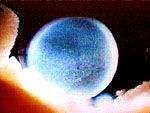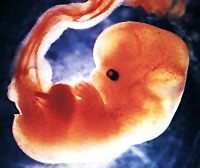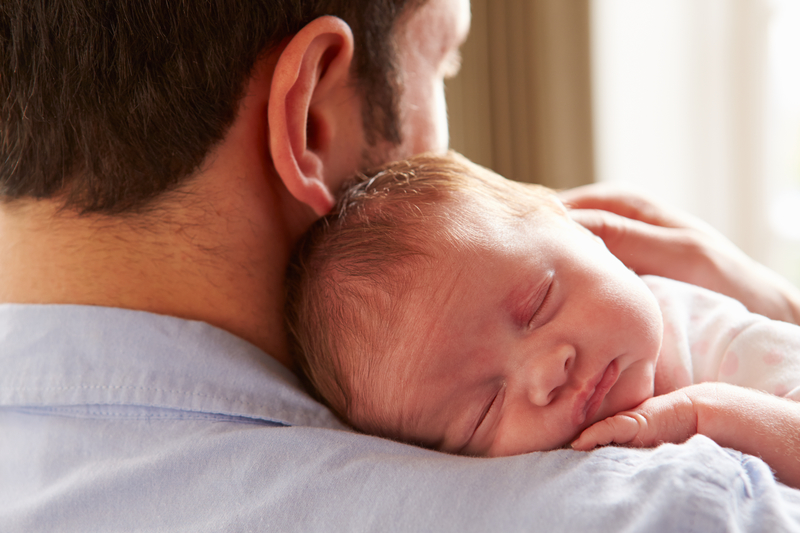Is the unborn human less than human?
The abortion debate rests on the moral status of the unborn: if the unborn are fully human, then nearly every abortion performed is tantamount to murder. Most “pro-choice” advocates argue, however, that although the unborn entity is human (belonging to the species Homo sapiens), it is not a person and hence not fully human.
Those who argue in this fashion defend either a decisive moment or gradualist approach to the status of the unborn.
Those who defend a decisive moment view argue that, although human life does begin at the moment of conception, it is at some later stage in the unborn human's development that it becomes worthy of our protection. It is at this moment that it becomes a person.
Other philosophers take a gradualist position and argue that the unborn human gradually gains more rights as it develops. Hence, a zygote has less rights than a 6-month-old fetus, but this fetus has less rights than an adult woman.
In order to understand decisive moment and gradualist theories, it is important that we carefully go over the biological facts of fetal development. While going over the facts of prenatal development. I will present the case for the pro-life view that full humanness begins at conception. I will deal with objections to this view when I critique the decisive moment and gradualist views
The Facts of Pre-natal development

First Month
Pregnancy begins at conception, the time at which the male sperm and the female ovum unite. What results is called a zygote, a one-celled biological entity, a stage in human development through which each of us has passed (just as we have passed through infancy, childhood, and adolescence).[1]
It is a misnomer to refer to this entity as a “fertilized ovum.” For both ovum and sperm, which are genetically each a part of its owner (mother and father, respectively), cease to exist at the moment of conception. There is no doubt that the zygote is biologically alive. It fulfills the four criteria needed to establish biological life: (1) metabolism, (2) growth, (3) reaction to stimuli, and (4) reproduction. (There is cell reproduction and twinning, a form of asexual reproduction, which can occur after conception. For more on twinning, see below.)

But is this life fully human? I believe that the facts clearly reveal that it is.
First, the human conceptus — that which results from conception and begins as a zygote—is the sexual product of human parents. Hence, insofar as having human causes, the conceptus is human.
Second, not only is the conceptus human insofar as being caused by humans, it is a unique human individual, just as each of us is. Resulting from the union of the female ovum (which contains 23 chromosomes) and the male sperm (which contains 23 chromosomes), the conceptus is a new—although tiny—individual.
It has its own unique genetic code (with 46 chromosomes), which is neither the mother's nor the father's. From this point until death, no new genetic information is needed to make the unborn entity a unique individual human.

Her (or his) genetic make-up is established at conception, determining her unique individual physical characteristics—gender, eye color, bone structure, hair color, skin color, susceptibility to certain diseases, etc. That is to say, at conception, the “genotype”—the inherited characteristics of a unique human being—is established and will remain in force for the entire life of this individual.
Although sharing the same nature with all human beings, the unborn individual, like each one of us, is unlike any that has been conceived before and unlike any that will ever be conceived again.
The only thing necessary for the growth and development of this human organism (as with the rest of us) is oxygen, food, and water, since this organism—like the newborn, the infant, and the adolescent—needs only to develop in accordance with her already-designed nature that is present at conception.
This is why French geneticist Jermoe L. LeJeune, while testifying before a Senate Subcommittee, asserted:
To accept the fact that after fertilization has taken place a new human has come into being is no longer a matter of taste or opinion. The human nature of the human being from conception to old age is not a metaphysical contention, it is plain experimental evidence. [2]
There is hence no doubt that the development of a unique individual human life begins at conception. It is vital that you—the reader—understand that…
You did not come from a zygote.
You once were a zygote.
You did not come from an embryo.
You once were an embryo.
You did not come from a fetus.
You once were a fetus.
You did not come from an adolescent.
You once were an adolescent.
Consequently, each one of us has experienced these various developmental stages of life. None of these stages, however, imparted to us our humanity.
Within one week after conception, implantation occurs—the time at which the conceptus “nests” or implants in her mother's uterus. During this time, and possibly up to fourteen days after conception,[3] a splitting of the conceptus may occur resulting in the creation of identical twins. In some instances the two concepti may recombine and become one conceptus. (See my response to the argument that the possibility of the conceptus twinning and the subsequent concepti recombining refutes the pro-life claim that full humanness begins at conception.)
At about three weeks, a primitive heart muscle begins to pulsate. Other organs begin to develop during the first month, such as a liver, primitive kidneys, a digestive tract, and a simple umbilical cord. This developing body has a head and a developing face with primitive ears, mouth, and eyes, despite the fact that it is no larger than half the size of a pea.
Toward the end of the first month (between 26 and 28 days) the arms and legs begin to appear as tiny buds. A whole embryo is formed by the end of the first month.
From the eighteenth day after conception, substantial development of the brain and nervous system occurs.
This is necessary because the nervous system integrates the action of all the other systems. By the end of the twentieth day the foundation of the child's brain, spinal cord, and entire nervous system will have been established. By the sixth week, this system will have developed so well that it is controlling movements of the baby's muscles, even though the woman may not be aware she is pregnant. At thirty days the primary brain is seen. By the thirty-third day the cerebral cortex, the part of the central nervous system which governs motor activity as well as intellect, may be seen. [4]
Second Month

Despite its small size, the unborn child now looks distinctly human (although it is human from conception). At this point it is highly likely that the mother does not even know she is pregnant. Brain waves can be detected in the unborn at about forty to forty-three days after conception.
During the second month, the eyes, ears, nose, toes, and fingers make their appearance; the skeleton develops; the heart beats; and the blood—with its own type—flows. The unborn at this time has reflexes and her lips become sensitive to touch. By the eighth week her own unique fingerprints start to form, along with the lines in her hands.
A vast majority of abortions are performed during this time, despite the scientific facts which clearly show that an individual human life is developing, as it would after birth, from infant to child to adolescent to adult.
In an important article, Professor John T. Noonan argues that it is reasonable to infer that toward the end of the second month of pregnancy the unborn has the ability to feel pain. [5] It is crucial to remember that the end of the second month (7 to 8½ weeks) is in the first trimester, a time at which a great majority of abortions are performed and at which the Supreme Court said a state may not prohibit abortions performed by a licensed practitioner.
From the facts of brain and nerve development, the pained expressions on the faces of aborted fetuses, the known ability to experience other sensations at this time, and the current methods by which abortions are performed, Noonan concludes from his research that as soon as a pain mechanism is present in the fetus—possibly as early as day 56—the methods used will cause pain.
The pain is more substantial and lasts longer the later the abortion is. It is most severe and lasts the longest when the method is saline poisoning.
“Whatever the method used, the unborn are experiencing the greatest of bodily evils, the ending of their lives. They are undergoing the death agony. However inarticulate, however slight their cognitive powers, however rudimentary their sensations, they are sentient creatures undergoing the disintegration of their being and the termination of their vital capabilities. That experience is painful in itself.” [6]
Third Month
Movement is what characterizes the third month of pregnancy. Although she weighs only one ounce and is comparable in size to a goose egg, the unborn begins to swallow, squint, and swim, grasp with her hands, and move her tongue. She also sucks her thumb. Her organs undergo further development. The salivary glands, taste buds, and stomach digestive glands develop—as evidenced by her swallowing and utilization of the amniotic fluid. She also begins to urinate. Depending on the unborn's sex, primitive sperm or eggs form. Parental resemblance may already be seen in the unborn's facial expressions.
Fourth and Fifth Months
Growth is characteristic of the fourth month. The weight of the unborn increases six times—to about one-half her birth weight. Her height is between eight and ten inches long [20.32 and 25.4 centimeters] and she can hear her mother's voice.
In the fifth month of pregnancy the unborn becomes viable. That is, she now has the ability, under our current technological knowledge, to live outside her mother's womb. Some babies have survived as early as twenty weeks.
The fifth month is also the time at which the mother begins to feel the unborn's movements, although mothers have been known to feel stirrings earlier.
This first movement was traditionally called quickening, the time at which some ancient, medieval, and common-law scholars thought the soul entered the body. Not having access to the biological facts we currently possess, they reasoned that prior to quickening it could not be proven that the unborn was “alive.” Current biology, by conclusively demonstrating that a biologically living human individual is present from conception, has decisively refuted this notion of “quickening,” just as current astronomy has refuted the geocentric solar system.
During the fifth month, the unborn's hair, skin, and nails develop. She can dream (rapid eye movement [REM] sleep) and cry (if air is present).
It is, however, perfectly legal under Roe v. Wade and Doe v. Bolton to kill this unborn human being by abortion for any reason her mother so chooses.
In the remaining four months of pregnancy the unborn continues to develop. The child's chances of survival outside the womb increase as she draws closer to her expected birthday. During this time she responds to sounds, her mother's voice, pain, and the taste of substances placed in the amniotic fluid. Some studies have shown that the child can actually learn before it is born. [7]
The child is born approximately 40 weeks after conception.

In summary, the pro-life advocate believes that full humanness begins at conception for at least four reasons:
At the moment of conception a separate unique human individual, with its own genetic code, comes into existence—needing only food, water, shelter, and oxygen in order to grow and develop.
Like the infant, the child, and the adolescent, the conceptus is a being who is in the process of becoming. She is not a becoming who is striving toward being. She is not a potential human life, but a human life with great potential.
The conceptus is the sexual product of human parents, and whatever is the sexual product of members of a particular mammalian species, is itself a unique individual member of that species.
The same being that begins as a zygote continues to birth and adulthood. There is no decisive break in the continuous development of the human entity from conception until death that would make this entity a different individual before birth. This is why it makes perfect sense for any one of us to say, “When I was conceived…”.
Justice Harry Blackmun (who wrote the majority decision in Roe v. Wade [1973]) has argued that the morality of abortion is completely contingent on the full humanness of the unborn.
The popular arguments for abortion rights either beg the question as to the full humanness of the unborn or ignore the question altogether. Both sound philosophical and scientific reasoning clearly establish the full humanness of the unborn from the moment of conception.
Further answers on this subject
- Definitive answers to questions about whether the human fetus might be less than fully human at some stage of development
For further reading
For a discussion of the theological arguments against abortion rights, see this author's article: Francis J. Beckwith, “A Critical Appraisal of the Theological Arguments for Abortion Rights,” Bibliotheca Sacra (July/September 1991).
Judith Jarvis Thomson argues that abortion is morally justified even if the unborn are fully human. I critique this argument in Francis J. Beckwith, “Personal Bodily Rights, Abortion, and Unplugging the Violinist: A Critical Analysis,” International Philosophical Quarterly (March 1992).
Francis J. Beckwith, Politically Correct Death: Answering the Arguments for Abortion Rights (Grand Rapids, Michigan: Baker Book House, 1993).
Francis J. Beckwith, Abortion and the Sanctity of Human Life (Joplin, Missouri: College Press, 2000).
Stephen Schwarz, The Moral Question of Abortion (Loyola University Press, 1990).
Randy Alcorn, Prolife Answers to Prochoice Arguments (Sisters, Oregon: Multnomah Press, 2000).
References
The facts in this section are taken from the following: F. Beck, D. B. Moffat, and D. P. Davies, Human Embryology, Second edition (Oxford: Basil Blackwell, 1985); Keith L. Moore, The Developing Human: Clinically Oriented Embryology, Second edition (Philadelphia: W. B. Saunders, 1977); Andre E. Hellegers, “Fetal Development,” in Biomedical Ethics, editor, Thomas A. Mappes and Jane S. Zembaty (New York: Macmillan, 1981), pp. 405-409; and Stephen M. Krason, Abortion: Politics, Morality, and the Constitution(Lanham, MD: University Press of America, 1984), pp. 337-349. [up]
Subcommittee on Separation of Powers, report to Senate Judiciary Committee S-158, 97th Congress, 1st Session, 1981, as quoted in Norman L. Geisler, Christian Ethics: Options and Issues (Grand Rapids: Baker, 1989), p. 149. [up]
James J. Diamond, M.D., "Abortion, Animation and Biological Hominization," Theological Studies 36 (June 1975), pp. 305-342. [up]
Stephen M. Krason, Abortion: Politics, Morality, and the Constitution(Lanham, MD: University Press of America, 1984), p. 341. [up]
John T. Noonan, “The Experience of Pain by the Unborn,” in The Zero People, Jeff Lane Hensley, editor (Ann Arbor, Michigan: Servant, 1983), pp. 141-56. [up]
Ibid., pp. 151-52. [up]
See Mortimer Rosen, “The Secret Brain: Learning Before Birth,” Harper's, April 1978, pp. 46-47. [up]
Author: Francis J. Beckwith. Adapted from a series that originally appeared in Christian Research Journal, Spring 1991. Provided with permission by Summit Ministries and the author. Edited for this publication by Paul S. Taylor, Christian Answers.
Copyright © 1991, 1998, Christian Research Institute. All Rights Reserved—except as noted on attached “Usage and Copyright” page that grants ChristianAnswers.Net users generous rights for putting this page to work in their homes, personal witnessing, churches and schools.
To print out the COMPLETE answer to this question, Open this file and print.

